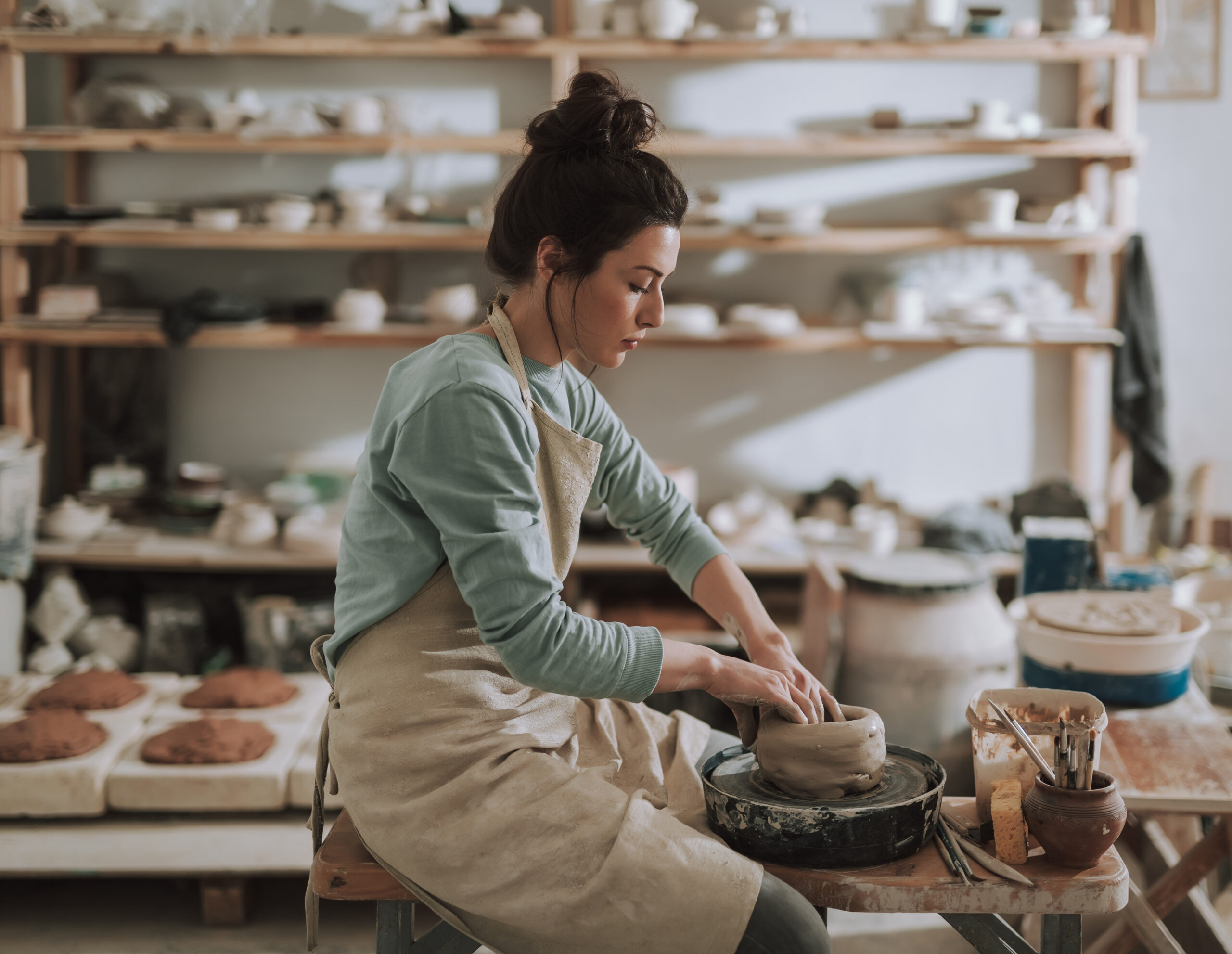Partnerships That Matter Most – Personal

Setting the Stage with Real Questions
As much as partnerships with others can shape our personal and professional lives—the most important partnership is the one we have with ourselves.
The strength of our relationship with ourselves will reinforce all other relationships in our lives. It will drive our energy levels, help us balance the vicissitudes of our daily lives, and allow us to center ourselves when needed.
The Potter and Wheel Are a Partnership.
The spinning wheel is a metaphor for life and its variable speed represents our ability to feel in control or completely overwhelmed. The potter sits over the wheel and applies or reduces pressure to the clay to create the desired vessel.
The finished pottery may be used to sustaining in us with food and drink or be proudly displayed to represent a creative part of ourselves that want to share with others. Many of the skills used to create either type of pottery translate directly to the relationship—partnership—we have with ourselves.
An experienced potter can make the process look effortless because they have learned and practiced some basic keys to success:
- Visualize and hand-draw the desired vessel before sitting at the wheel
- Center themselves over wheel before starting
- Create a strong connection—foundation—between the clay and wheel
- Determine the appropriate speed of the wheel
- Balance both hands in shaping and supporting the clay
- Learn that it’s okay to start over or take a different approach
All skills that we can apply to help us become the best version of ourselves with practice. Skills that we can build on to strengthen—professional and personal—relationships that matter most to us.
The potter is aware of all the ingredients needed to create and fire the perfect pottery. The obvious ingredients are clay, water, pressure, and patience; the not so obvious ingredients, in the potter’s control, is the speed of the wheel.
We Are All Potters of Our Own Lives.
Most importantly, we get to control the speed of our reactions to what life presents us—even when it seems to come at us from all directions. Practice slowing down situations in life to:
- Visualize where we are and want to be
- Center ourselves with valued practices
- Create a list of our thoughts and plans
- Determine the Best Next Step
- Balance our emotional energy with our values
- Learn it’s okay to ask Real Questions before getting closer to where we want to be
Embracing a hands-on approach to partnership with ourselves and others is a recipe for great relationships.
Real Questions in the moment can provide valuable feedback and cues to successfully navigate from where we are to where we want to be. The four steps to mixing real questions are simple; It is very important, but not easy, to ask ourselves before we ask others for their answer:
- I don’t know the answer. (ask)
- I want to know the answer. (curious)
- I am willing to ask the question. (courage)
- I am willing to reflect and decide. (action)
A Key Ingredient of Real Questions
The answers to the questions above are important provided we ask ourselves the questions before we ask others.
Consider an important school or career decision that might involve your parents or partner. It is important to ask yourself these four Real Questions and reflect on your answers, before asking others these same questions. The benefits of asking these real questions sequentially are significant:
- Where am I? and Where do I want to be?
- Where are we? and Where do we want to be?
And the consequences of asking them non-sequentially, or not at all, can create long-term consternation or regret. In 1989, Stephen R. Covey wrote The 7 Habits of Highly Effective People which sold 20 million copies worldwide; 15 years later, he would write The 8th Habit essentially urging us to: "Find your voice and inspire others to find theirs."
Listen to your voice to work on the partnership with yourself that matters most—and build the foundation for those same levels of partnership with others.
Curious about how this applies in a business setting?
SNE’s CoreSelf Mapping provides an 8-step worksheet that guides individuals through a series of Real Questions that can be completed in less than an hour. Key prompts include: who is getting closer and farther away from each other; where am I and where do I want to be; what are my most important values and practices; what are my actionable thoughts and plans –-- all resulting in my Best Next Step(s).
About the Authors
Jonathan Thomas, MSW
Whether at the potter's wheel, coaching medical professionals and teams, or in his private counseling practice, Jonathan Thomas has spent his life molding, shaping and creating something beautiful and new.
Tim Preston
As a successful serial-entrepreneur and angel investor, Tim Preston has spent the majority of his life learning, overcoming, and creating, from blank pieces of paper: self, spaces, teams, and businesses.
Together, Jonathan and Tim founded Simple. Not Easy., LLC, a company that developed CoreSelf Positioning™ tools to help companies and individuals to slow down and align energy levels, values, and actions in order to formulate their best next steps.
Learn more about Jonathan, Tim & CoreSelf Positioning.